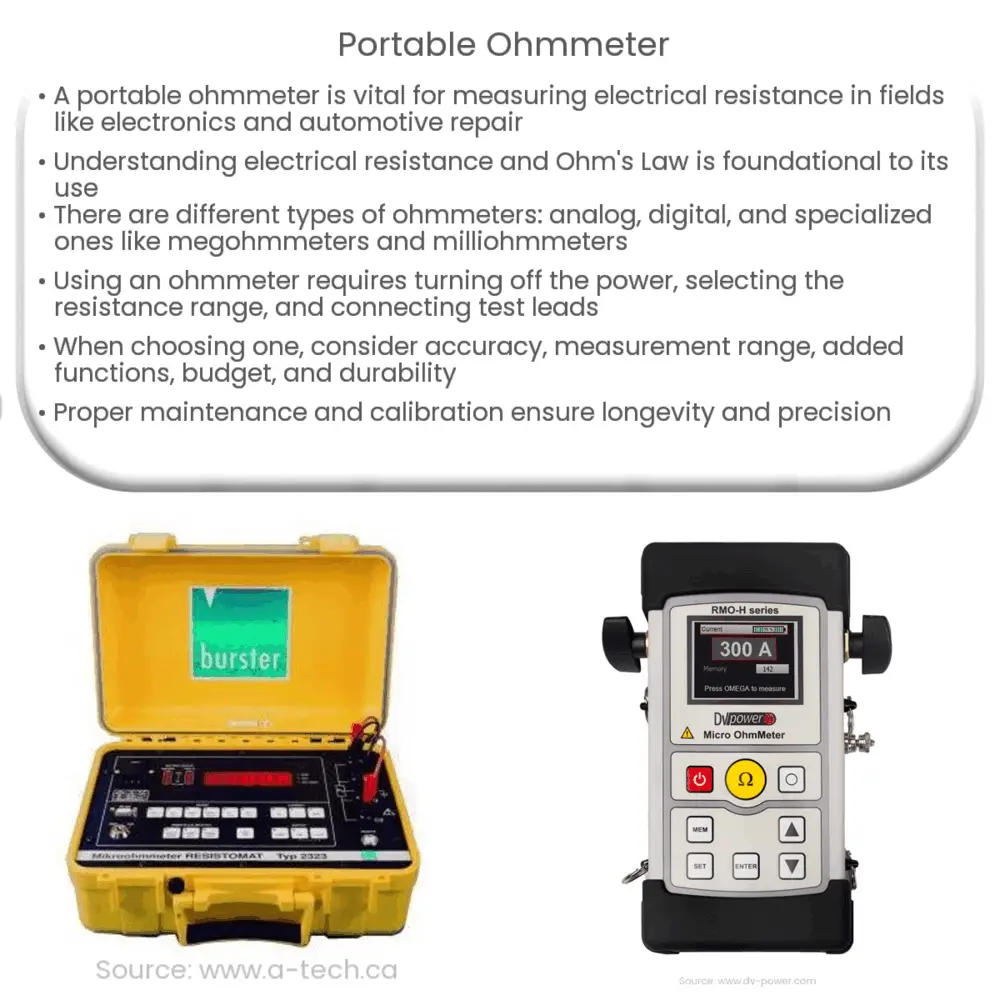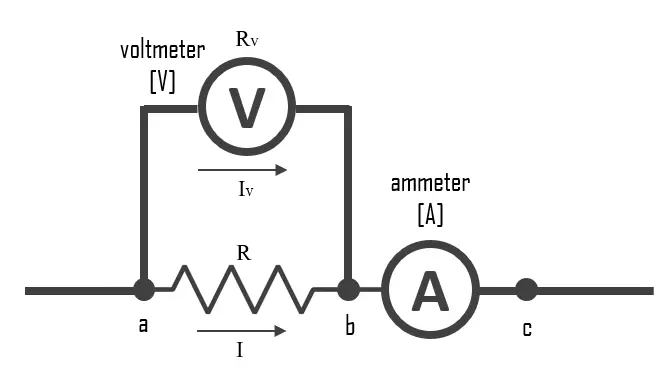A portable ohmmeter is a compact, versatile tool used to measure electrical resistance, essential for electronics, electrical engineering, and automotive repair.

Portable Ohmmeter: A Comprehensive Guide to the Essential Electrical Measurement Tool
Introduction
A portable ohmmeter is a compact, versatile, and essential tool for both professionals and DIY enthusiasts alike. It allows users to measure electrical resistance, which is a fundamental parameter in various fields, such as electronics, electrical engineering, and even automotive repair. In this article, we’ll delve into the significance of portable ohmmeters, their various types, and how to use them effectively.
Understanding Electrical Resistance and Ohm’s Law
Before discussing portable ohmmeters, it’s crucial to understand electrical resistance and Ohm’s Law. Resistance, measured in ohms (Ω), is the opposition offered by a material to the flow of electrical current. Every component and conductor exhibits some degree of resistance, which can significantly impact the overall performance of an electrical circuit.
Ohm’s Law is a fundamental principle in electronics, which states that the current (I) flowing through a conductor between two points is directly proportional to the voltage (V) across the two points and inversely proportional to the resistance (R) of the conductor. Mathematically, it is represented as:
I = V/R
Thus, measuring resistance is vital to ensure the optimal functioning of electrical and electronic circuits.
Types of Portable Ohmmeters
Portable ohmmeters are available in various forms, each with its unique features and applications. Some common types include:
Analog Ohmmeters
Analog ohmmeters use a mechanical needle and a graduated scale to display the resistance value. Although less accurate and more challenging to read than digital ohmmeters, they can offer certain advantages, such as a faster response time and the ability to detect fluctuations in resistance values.
Digital Ohmmeters
Digital ohmmeters, also known as digital multimeters (DMM), are the most common type of portable ohmmeter. They offer high accuracy, easy-to-read digital displays, and various additional functions, such as measuring voltage, current, capacitance, and frequency. Digital ohmmeters are widely used in professional and DIY settings due to their versatility and ease of use.
Specialized Ohmmeters
In addition to general-purpose ohmmeters, there are specialized types designed for specific applications. For example, insulation resistance testers (megohmmeters) measure the resistance of insulating materials to prevent electrical hazards and ensure the safety of electrical installations. Another specialized ohmmeter is the milliohmmeter, which measures very low resistances with high accuracy, commonly used in industries like aerospace and automotive.
Using a Portable Ohmmeter
Operating a portable ohmmeter is relatively simple, but following some basic steps will ensure accurate and reliable measurements:
- Turn off the power to the circuit or component being tested.
- Select the appropriate resistance range on the ohmmeter.
- Connect the test leads to the component or circuit points.
- Read the displayed resistance value and take note of the measurement.
Factors to Consider When Choosing a Portable Ohmmeter
When selecting a portable ohmmeter, consider the following factors to ensure you invest in the right tool for your needs:
- Accuracy and Resolution: The accuracy of an ohmmeter is essential, especially for precise measurements. Ensure the ohmmeter you choose offers the level of accuracy you require. Additionally, consider the resolution, which is the smallest increment the ohmmeter can display.
- Measurement Range: Different ohmmeters have varying resistance measurement ranges. Choose a model that accommodates the resistance values you expect to encounter in your work or projects.
- Additional Functions: Multifunctional devices, such as digital multimeters, can measure not only resistance but also voltage, current, capacitance, and more. If you need these additional capabilities, opt for a device that includes them.
- Budget: Portable ohmmeters come in various price ranges. While high-end models offer advanced features and better accuracy, more affordable options can still provide reliable performance for basic applications.
- Size and Durability: Choose a portable ohmmeter that is compact, lightweight, and durable, especially if you plan to use it in field applications or challenging environments.
Maintaining and Calibrating Your Portable Ohmmeter
To ensure the longevity and accuracy of your portable ohmmeter, follow these maintenance and calibration tips:
- Keep the ohmmeter clean and store it in a protective case when not in use.
- Replace worn or damaged test leads, as they can impact the accuracy of your measurements.
- Periodically check the battery and replace it when necessary to prevent inaccurate readings.
- Calibrate your ohmmeter according to the manufacturer’s recommendations or after exposure to extreme conditions that could affect its performance.
Conclusion
A portable ohmmeter is an indispensable tool for anyone working with electrical and electronic systems. It allows for the efficient measurement of resistance, helping to diagnose and troubleshoot a wide range of issues. By understanding the different types of ohmmeters, their applications, and how to use them effectively, you can ensure the optimal performance of your circuits and devices. Remember to consider factors such as accuracy, measurement range, additional functions, budget, and durability when choosing the right portable ohmmeter for your needs, and follow proper maintenance and calibration practices to guarantee its long-term reliability.



